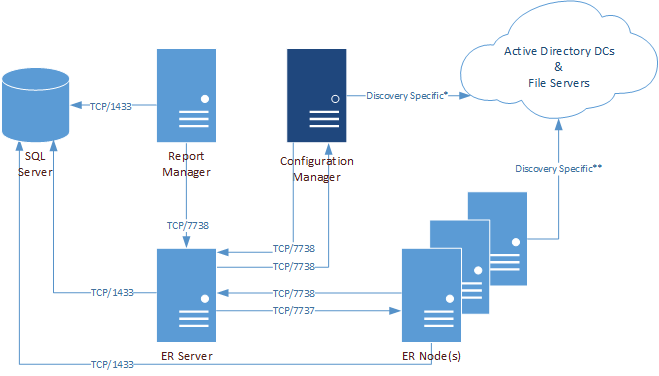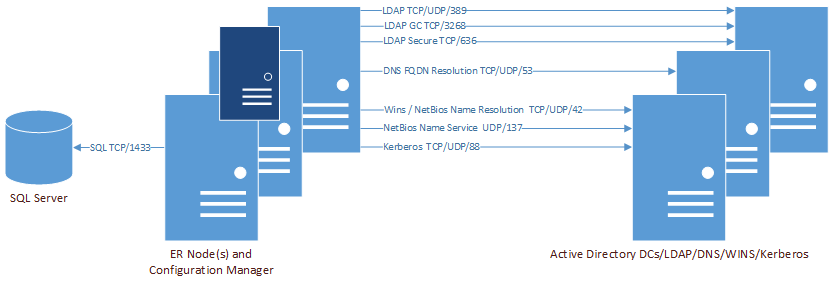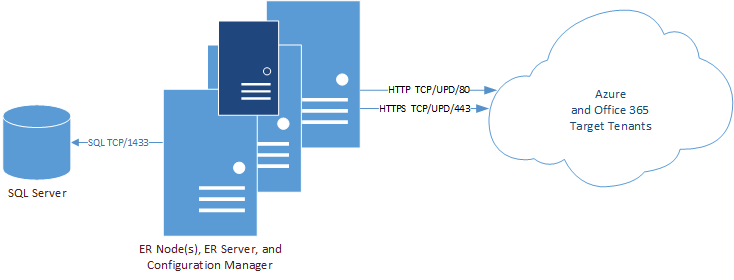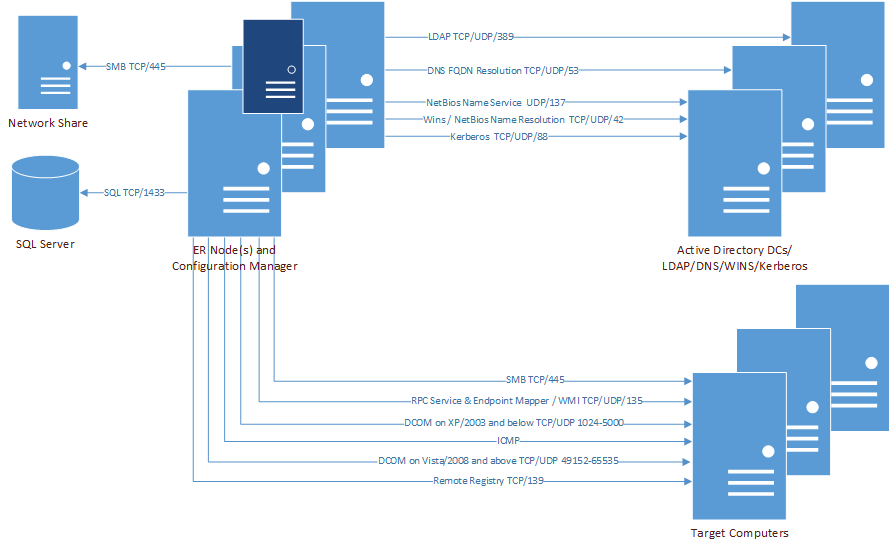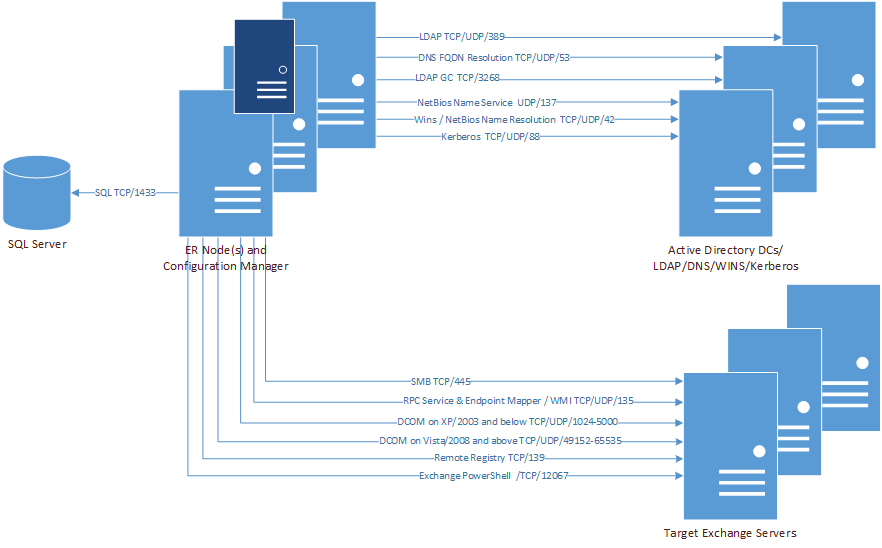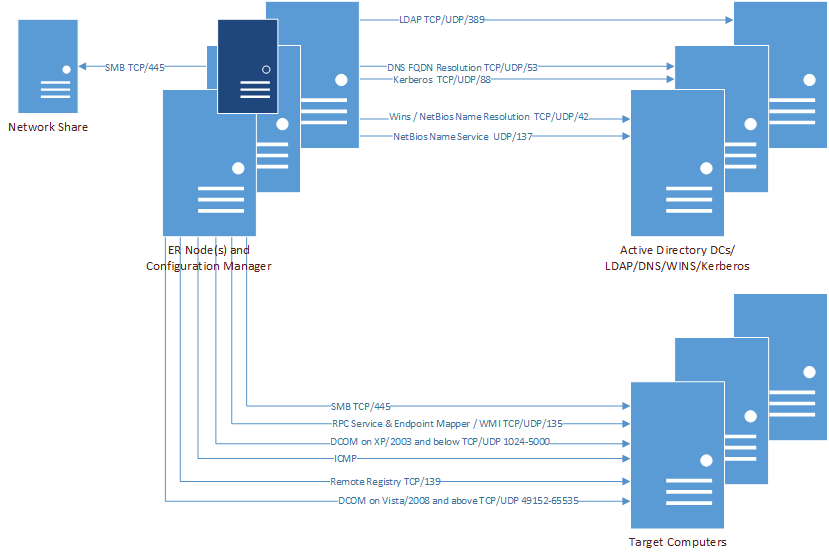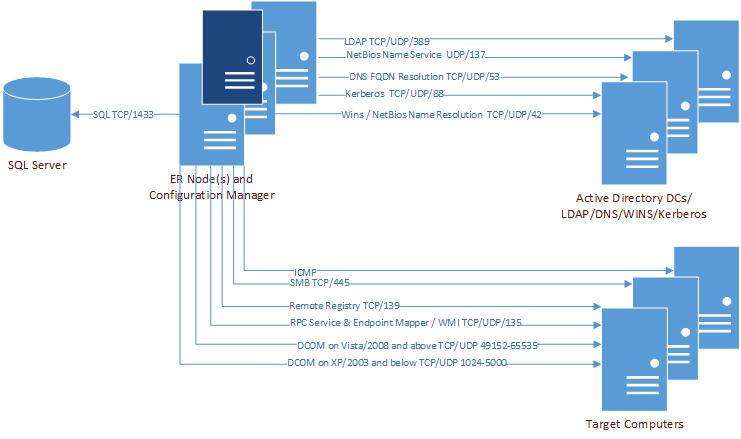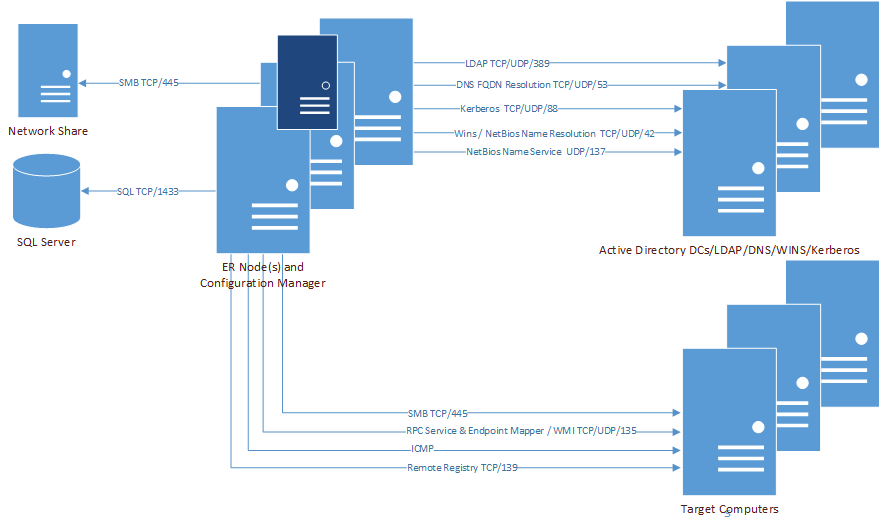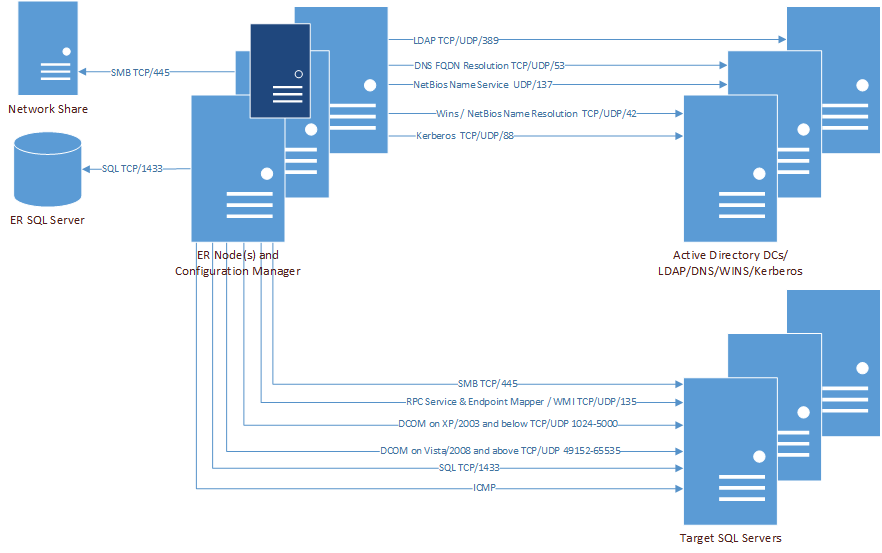Permissions for Enterprise Reporter Discoveries on NAS Devices
The following table outlines the permissions required for Enterprise Reporter discoveries.
Permissions for Enterprise Reporter Tenant Applications
Minimum Permissions for Initially Installing Enterprise Reporter
Port Requirements
For the Enterprise Reporter components to communicate, some ports must be open.
This figure outlines the ports used by the Enterprise Reporter components.
*For more information on ports used when creating a discovery, see Table 11.
**For more information on ports used during data collections, see Table 12.
This table outlines the ports used by all of the Enterprise Reporter components.
|
Configuration Manager1 |
|||||||
This table outlines the ports used by all of the Enterprise Reporter discoveries.
|
X* |
|||||||||||||
|
X* |
|||||||||||||
|
X** |
|||||||||||||
|
X** |
|||||||||||||
|
DCOM on Vista/2008 and above |
|||||||||||||
*Exchange 2010 and higher, **Exchange 2007 only
The following figures outline the ports used by the Enterprise Reporter discoveries.

